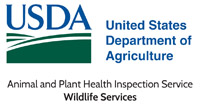United States Department of Agriculture: Animal and Plant Health Inspection Service

United States Department of Agriculture Wildlife Services: Staff Publications
Plants, prions and possibilities: Current understanding and significance of prion uptake into plants
Document Type
Article
Date of this Version
5-2016
Citation
North American Elk, May, 2016:69.
Abstract
Chronic wasting disease (CWD) is an infectious, neurodegenerative disease of deer (white-tailed and mule), elk, moose, sika deer and muntjac caused by a misfolded version of a normally occurring protein. The notion that CWD could be spread indirectly via the environment has been documented and accepted in the scientific community for quite some time. Deer and elk consume soil, inhale dust and lick objects that have infectious material on them, resulting in chronic, low dose exposure. Surface contamination of plants with urine or feces is likely an additional source of exposure via ingestion and has been modeled in the laboratory by Pritzkow, et. al., (2015). In 2014 Dr. Christopher Johnson and his colleagues at the United States Geological Survey (USGS) and the University of Wisconsin, Madison proposed a novel mechanism for CWO infectivity associated with plants at the international Prion meeting. Dr. Johnson and his group hypothesized and presented data supporting the idea that plants could take up infectious prion proteins into their tissues by contact and absorption through their roots.
Included in
Animal Sciences Commons, Other Immunology and Infectious Disease Commons, Veterinary Infectious Diseases Commons, Veterinary Pathology and Pathobiology Commons, Veterinary Preventive Medicine, Epidemiology, and Public Health Commons


Comments
US government work